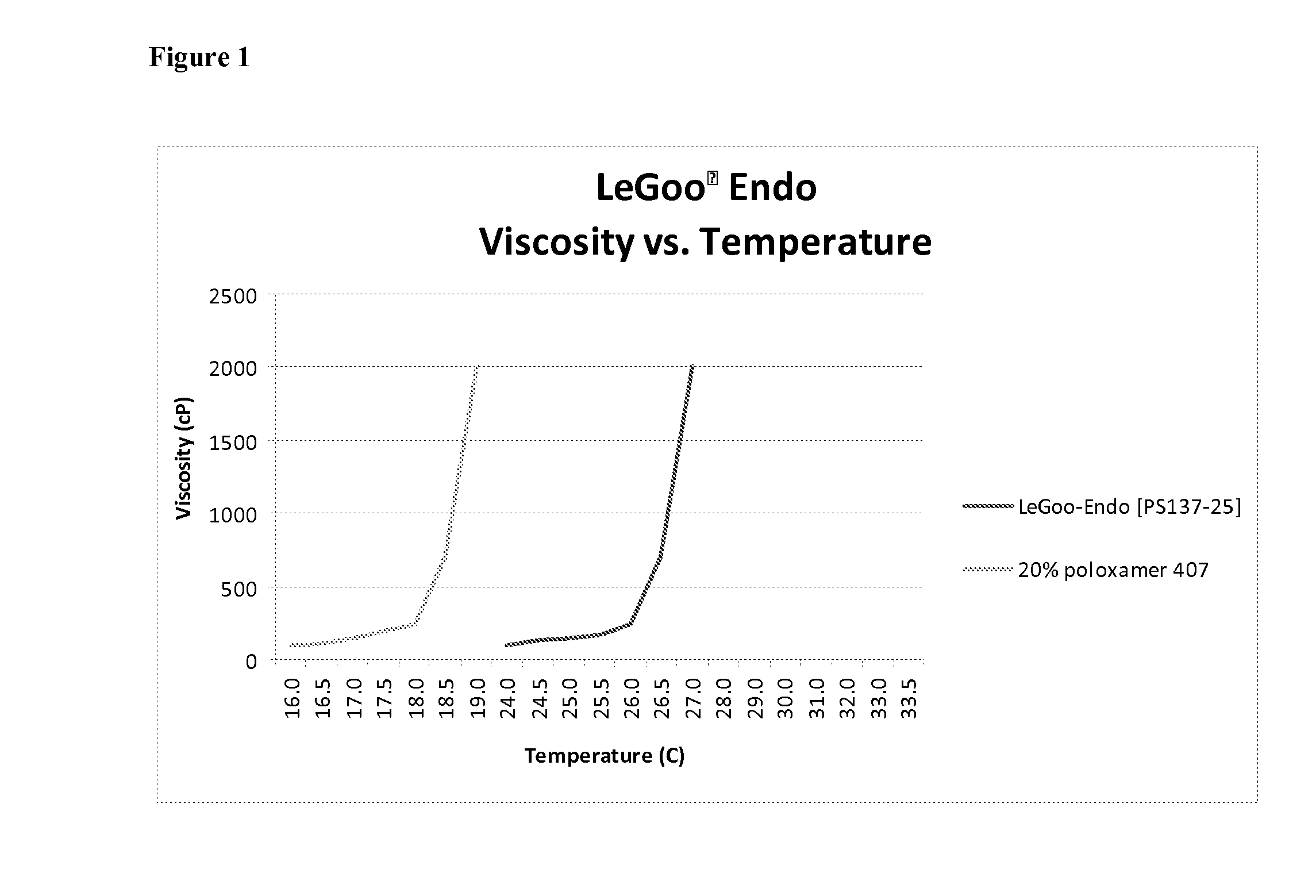Endoscopic mucosal resectioning using purified inverse thermosensitive polymers
a thermosensitive polymer and endoscopic technology, applied in the field of endoscopic mucosal resection using purified inverse thermosensitive polymers, can solve the problems of relatively short tissue elevation after saline injection, and the inability to find an adequate solution to this problem
- Summary
- Abstract
- Description
- Claims
- Application Information
AI Technical Summary
Problems solved by technology
Method used
Image
Examples
Embodiment Construction
[0006]Endoscopic mucosal resection (EMR) represents a major advance in minimally invasive surgery in the gastrointestinal tract. EMR is based on the concept that endoscopy provides visualization and access to the mucosa, the innermost lining of the gastrointestinal tract—the site where most gastrointestinal cancers from the esophagus to the rectum have their origin. The method combines the therapeutic power of endoscopic surgery with the diagnostic power of pathology examination of resected tissue.
[0007]EMR first proliferated in Japan, where endoscopists were faced with a very high incidence of stomach cancer. This differs from most Western countries, including the United States, where colon cancer is a much more common disease. Most colon cancers arise in mucosal polyps, which project into the lumen of the colon, making them relatively easy to remove at endoscopy using wire loops to grasp the polyp base. The polyps are then excised with electric current, producing simultaneous cutt...
PUM
| Property | Measurement | Unit |
|---|---|---|
| transition temperature | aaaaa | aaaaa |
| transition temperature | aaaaa | aaaaa |
| transition temperature | aaaaa | aaaaa |
Abstract
Description
Claims
Application Information
 Login to View More
Login to View More - R&D
- Intellectual Property
- Life Sciences
- Materials
- Tech Scout
- Unparalleled Data Quality
- Higher Quality Content
- 60% Fewer Hallucinations
Browse by: Latest US Patents, China's latest patents, Technical Efficacy Thesaurus, Application Domain, Technology Topic, Popular Technical Reports.
© 2025 PatSnap. All rights reserved.Legal|Privacy policy|Modern Slavery Act Transparency Statement|Sitemap|About US| Contact US: help@patsnap.com


